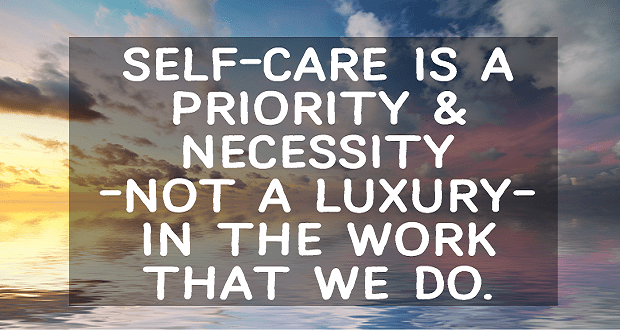Social justice is not a framework. It is not a list of actions or behaviors. It is a relational orientation toward humanity and dignity for all. So, how do you operationalize a relational orientation?
Social justice is not a framework. It is not a list of actions or behaviors. It is a relational orientation towards humanity and dignity for all. Share on XTo orient toward justice means to reorient the practices, policies and procedures toward a valuing of human dignity. This must be a cultural orientation — because culture provides direction for an organization across systems. This concept may be new, but what is not new is the understanding that institutions are made of multilevel systems that are designed to move each interconnected element toward the mission–articulated outcomes.
Here is the key point for consideration: ultimately, systems are comprised of people — people who have organized themselves. At the individual level, each person within an institution both generates and adheres to the cultural agreements that construct and advance that organization. Similarly, culture articulates how systems of people work within their respective spaces — through customs, norms, behaviors, standards for accomplishment, and rewards or punishments. This culture may or may not be formally expressed. Nonetheless, culture exists and is embodied throughout the organization, even if it is unseen
Often, by default, institutions (even Black and people of color-led ones) organize themselves by standards of practice that align with the dominant culture — white supremacy. It is the water we as fish swim in. Kenneth Jones and Tema Okun articulate the elements of white supremacy culture and how they reinforce themselves — producing work environments that reduce the humanity of employees and make operationalizing justice impossible. One of the purposes of listing characteristics of white supremacy culture is to both name and describe the standards and unconscious norms that limit what is possible inside of institutions.
By default, institutions (even Black and people of color-led ones) organize themselves by standards of practice that align with the dominant culture—white supremacy. Share on XAs a result of these limitations, many organizations may communicate a desire to work for justice, yet only allow people or emerging activities to function within the confines of existing cultural norms — which results in adapting and co-opting new initiatives, spokespeople, language… ultimately, it often leaves room to adhere to the pre-existing status quo. Jones’ and Okun’s work allows the recognition and naming of white supremacy. If you’re unable to recognize white supremacy culture, take a moment to revisit the earlier article by Thamara Subramanian on Rest & Wellness. This article highlights the way even rest culture has been co-opted by white supremacy, despite intentional attempts to reject the white supremacist norm of productivity.
Many organizations may communicate a desire to work for justice, yet only allow people or emerging activities to function within the confines of existing cultural norms. Share on XSo, what does it look like to establish social-justice-oriented culture? Though informed language and anti-racist policies may be generated in well-intentioned DEIJ efforts, they will fall short in implementation without cultural elements that uphold and reinforce them. To drive systems–change and support the sustainability of new initiatives, diverse talent retention and evolving internal policy, a significant culture shift is needed. The real challenges to lasting organizational change sit within the difficulty and uncertainty of changing an institution’s cultural norms.
Though informed language and anti-racist policies may be generated in well-intentioned DEIJ efforts, they will fall short in implementation without cultural elements that uphold and reinforce them. Share on XUltimately, organizations must examine themselves through a lens of the elements of white supremacy culture and decide for themselves how they will divest from the delusion of domination. Thanks to the list generated by Jones and Okun, organizations can identify the cultural elements active in their institutions and take action to generate new strategies for systems change management. The following serves as guidance and direction to consider:
Organizations must examine themselves through a lens of the elements of white supremacy culture and decide for themselves how they will divest from the delusion of domination. Share on X- The first step, aligned with guidance provided by Brittany J. Harris on truth-telling and reconciliation, involves designing a culture that is intentionally invested in everyone — especially the most marginalized. Make space and time to hear, listen, understand, and respond based on the suggestions of those pushed to the margins and away from power. White supremacy culture thrives on power hoarding and binary thinking. Centering the voices of the most marginalized means systemically changing cultural elements and flattening power norms. This shift in orientation aligns dignified, human–centered practice with change management and by default, creates a new cultural element.
- Secondly, move toward collective action for a collective future. Not only will America be a majority-minority convey in less than 25 years, but youth from marginalized communities will drive growth. If the future is collective, it will constantly reorient toward the collective dignity and humanity of those included. Collectivism will not fit inside of a “dominant and subordinated binary,” — it is too expansive and too revolutionary.
This is why collective action counters the white supremacist cultural element of individualism and perfectionism: The myths of these cultural elements lie in the embodied truth that perfection is unattainable, and that no human exists in the world, or moves through the world, without participating in systems, families, teams, groups. Even now, isolation is teaching us how necessary human connection is to our sense of well–being. We are hard-wired for collective belonging, and collective futures must center on inclusive membership. Harvard Business Review points out that community generates tangible value for businesses and superior business models of membership and belonging.
Centering the voices of those most impacted by oppression to build a collective future, serves as a strong foundation for what must be a continued and ever-evolving response to the morphing and unrelenting nature of oppression. Expanding cultural norms in this counter–direction will curate a work environment that supports, upholds, rewards and reinforces a justice-oriented relationship — with dignity and humanity for all.
DEIJ work that orients human dignity and develops new cultural elements will not stay within the walls of an organization. Culture is contagious — just look at the rising popularity of TikTok. Employing new culture as an organization should result in new norms around how the institution orients toward the community. It should drive action within the local geographic footprint — as internal change influences external action and responds to the change and evolution outside the walls of the organization.
To be most effective, institutions that orient towards justice must commit to the work of reorientation often. Because justice is a relational positioning toward humanity and dignity, there can be no ‘point of arrival’ — simply the process of continuous movement, embodied action, praxis, reflexivity and reorientation — both in the organization’s culture and in the instructions continued commitment to the local community. Only through cultural shifts that move away from white supremacy culture, and toward humanity and dignity for all, can an organization embody commitment to justice.
Because justice is a relational positioning towards humanity and dignity, there can be no ‘point of arrival’ — simply the process of continuous movement, embodied action, praxis, reflexivity, and reorientation. Share on XWell–intentioned shifts in organizational programs, and incentivizing these efforts, are both valuable, but will meet with continued feasibility challenges if we do not also craft new norms, standards and practices that orient away from white supremacy culture toward collective human dignity. It is a process that is never done, but can and should begin with what organizations can control — their culture.




















